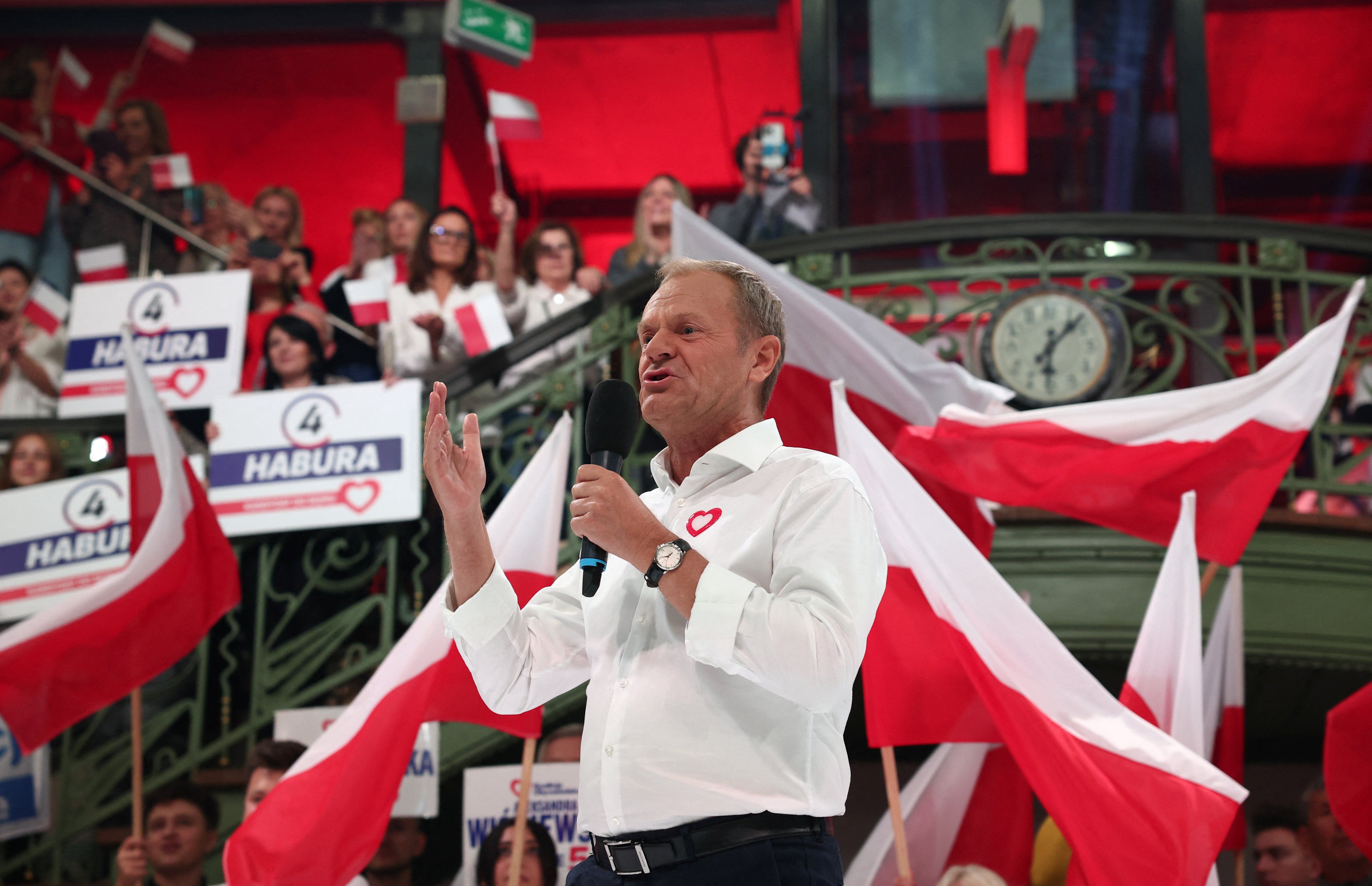This weekend, Poles go to the polls in a Poland that is as polarized between political poles — ok, ok, we’ll stop. But the election is a supremely big deal for the EU’s fifth most populous country, a nation that is aiming to become the military superpower of Eastern Europe.
The ruling Law and Justice Party, aka PiS, which has held power since 2015, is hoping that its mix of Catholic-inflected nationalism and generous social welfare payments will help it to carry the day, despite an increasingly sluggish economy. PiS is currently leading the polls, at 37%
The main opposition party, Civic Platform, known by its Polish initials "PO", says the current government’s ultra-conservative social values are out of touch with today's Poland, and it warns that the PiS's abuse of democratic norms is distancing the country from the rest of Europe — the EU has already withheld money from Warsaw over the government’s moves to undermine the judiciary. PO, led by former Prime Minister and one-time European Commission president Donald Tusk, is polling at 30%.
“Fundamentally the election is about this age-old Polish question of ‘what is Poland?’,” says Aaron Korewa, director of the Atlantic Council’s Warsaw office. “Is it going to be more like the Western European countries, which is what the opposition proposes, or is it going to go in its own special direction, which is what the current government is all about?”
Is Ukraine part of this story? Yes. While most Poles are united in supporting Ukraine’s fight against Russia, Korewa says, the war’s impact on the domestic scene in Poland is a different story. Over Kyiv’s objections, Warsaw has banned imports of Ukrainian grain to protect Polish farmers, and there has been grumbling about the costs of supporting and integrating the more than 1 million Ukrainian refugees currently in Poland.
Small parties, big impact. While PO and PiS are the heavyweights, analysts say the election will hinge on the performance of two smaller parties: One is Confederation, an upstart mashup of libertarians and ultranationalist Euroskeptics that is challenging PiS from the far right. Confederation has risen to 10% in the polls, in part by calling for a rollback of support for Ukrainian refugees.
The other party to watch is Third Way, a center-right liberal party whose platform is closer to Tusk’s. If Third Way surpasses the 8% threshold of the vote that is needed to enter parliament, analysts say, this will give PO a much stronger chance of forming a government. Third Way heads into the election polling at 11%.
There’s also a juicy personal feud at the heart of the election: PiS leader Jarosław Kaczyński and PO’s Tusk publicly despise each other.
A generation ago, both men worked alongside famed dissident Lech Wałęsa to bring down communism, but by the mid-2000s they were bitter rivals. Kaczyński sees Tusk as a traitor who will sell out Poland’s interests to Brussels and Berlin. It doesn’t help that he thinks Tusk was involved in the 2010 airplane crash in Russia that killed his twin brother Lech, who was then Poland’s president. Tusk sees the reclusive Kaczyński, meanwhile, as an out-of-touch eccentric who poses a danger to the country’s democracy.
What’s likely to happen? Given the fragmentation of the vote, and Poland’s deep polarization, analysts expect a hung parliament in which no party is strong enough to form a government. In that case, says Eurasia Group’s Anna Carina-Hamker, Confederation could be the kingmaker.
The results? Should be known by early next week. See you then.